During our great and enlightening journal club discussions, in which each student leads the discussion on one of the seminal articles for their own project, we learned some new categories used to estimate the extent of the social role that a given individual can exert over a group. One of this categories is known as “betweenness” and it measures how often a given individual is found in between clusters. An individual with a high level of “betweenness” is then expected to be an “information broker” in cetacean societies. Another related category is known as “degree.” The degree of an individual is the measurement of its influence on its peers.
The betweenness and degree levels of our SRKWs has never been fully studied. However, during our research we were lucky enough to catch some of these interactions. Our photographic record revealed some of these events, in which matrilines across pods mixed with each other or individual whales joined different matrilines.Â
Some of the biggest “wonderers” observed during our 5 weeks at sea were J27 (male), J1 (male), K21 (male), L 77 (female), L72 (female).Â
Here are some of those images:
Read More
Dall’s porpoises flirting with danger……
Flat, mirror like waters were suddenly broken by the splash of Dall’s porpoises swimming around a large male killer whale. These creatures seem to have the adrenaline-addiction gene. Riding the bow wave of an orca is not exactly the best idea for a cetacean one seventh of their size. Although our resident whales are fish eaters, there have been accounts of instances in which southern residents have killed Dall’s porpoises while at play. Whether a challenge or a game, the Dall’s seemed the most interested in the interaction as the killer whale seemed to zig-zag her path trying to shake them off.
Whatever the reasons behind this dangerous game, to us humans it was like seeing a mini-orca and a full sized one side to side, sizing each other up, comparing dorsals, comparing speed…or perhaps simply having a profound inter-species recognition. Dall’s have never been preyed upon by southern resident killer whales, so it is conceivable that the few deaths reported from “play-like†interactions were just unfortunate consequences from the orca’s inability to measure its own strength against their much smaller “play-mateâ€. The short, playfull and peaceful  interaction we were able to witness was certainly awe inspiring.
(images in uploading process, server errors)
Read More
Humpback-fluke 1
Ithaca
When you set out for Ithaka
ask that your way be long,
full of adventure, full of instruction.
The Laistrygonians and the Cyclops,
angry Poseidon – do not fear them:
such as these you will never find
as long as your thought is lofty, as long as a rare
emotion touch your spirit and your body.
The Laistrygonians and the Cyclops,
angry Poseidon – you will not meet them
unless you carry them in your soul,
unless your soul raise them up before you.
Ask that your way be long.
At many a Summer dawn to enter
with what gratitude, what joy –
ports seen for the first time;
to stop at Phoenician trading centres,
and to buy good merchandise,
mother of pearl and coral, amber and ebony,
and sensuous perfumes of every kind,
sensuous perfumes as lavishly as you can;
to visit many Egyptian cities,
to gather stores of knowledge from the learned.
Have Ithaka always in your mind.
Your arrival there is what you are destined for.
But don’t in the least hurry the journey.
Better it last for years,
so that when you reach the island you are old,
rich with all you have gained on the way,
not expecting Ithaka to give you wealth.
Ithaka gave you a splendid journey.
Without her you would not have set out.
She hasn’t anything else to give you.
And if you find her poor, Ithaka hasn’t deceived you.
So wise you have become, of such experience,
that already you’ll have understood what these Ithakas mean.
By Constantine P Cavafy (1863-1933, Greece)
Read More
Log for September 16th, 2010. The most bio-diverse day to date in the Beam Reach Experience!
Our days aboard “Gato Verde” (the 42′ state of the art Catamaran that is now our home) have been nothing short of surreal and magical. But on this particular day, the foggy and mysterious 26th day in September, Poseidon was definitely on our side. It’s a foggy and mysterious morning, sailing with caution we set on our course for the day. Captain Shuster blasts his ‘fog horn’ at 5 minute intervals to warn any ‘invisible†vessels of our presence. By 10:30 am we’ve reached the bird aggregations (way point 168), surrounded by hundreds of birds of various species we are suddenly surprised by a couple of Minke Whales (Balaenoptera acutorostrata) foraging in the area. They’re  moving slowly among the kelp, giants among the dwarfed birds that rest on the surface. In the middle of our observations a baby harbor seal (Phoca vitulina) visits the stern of our boat, seemingly wanting to get on board. Val’s sniper ‘s training pays off as he captures an elusive puffin. The exact genus of this fleeting bird confounds the naturalists and scientists aboard the Gato.  The angle of the shot is not ideal, but a puffin it is indeed, that is a fact they can all agree on. Unable to decide between the Horned Puffin (Fratercula corniculata) , or the Tufted Puffin(Fratercula cirrhata), they leave the matter to rest, but a profound discontent lingers in the air. ‘Tis then when a Stellar sea lion (Eumetopias jubatus) is spotted frolicking in the kelp, yet another wonder hiding in the heavy fog that envelopes the bird aggregations. Cat, our young and enthusiastic Britt scientist, is able to record acoustically some of blows from the Minke’s for later comparison, taking advantage of the very quiet conditions we’d been enjoying on this lonely morning. By 1.30 pm we catch up with the orcas (way point 170). The day is still very foggy and there are fewer boats around than usual, including various small research outboards. In spite of the heavy fog, we are able to observe the whales in very active behavior: tail lobs, rolling, “cart wheels†breaches,  porpoising, periscoping, baby tail slapping. Around 2.30 some in the group see a calf spy hopping and vocalizing above water. We then enter a fog patch and think to have lost them, but then, all of a sudden, a crazy display of behaviors and vocalizations almost above water surrounded us. The ambient noise is now very low, and the whales and their echoing melodies are heard and recorded with crystal-like quality. The crew is now in a strange trance, no one can believe our luck. This day was to be recorded as the most exciting and biodiverse day in our adventure to date.
By the late afternoon, as the pretty Thea Foss crosses our path, we catch a school of Dall’s porpoises riding their bow wave. The perfect end to a perfect day.
Thanks for reading.
V
Read More
September 12th & 13th, 2010
After 3 weeks of intense studies on bioacoustics, the ecology and conservation of the southern resident killer whales of the Salish Sea and their prey of choice, Chinook salmon, among many other fascinating aspects of the San Juan ecosystem, the Beam Reach crew for this fall: Dr. Scott Veirs, Dr. Jason Wood, Dr. Val Veirs, Hana, Cat, Garrett, Dave, Meagan and myself, were ready to meet Captain Todd and his great Cat (short for catamaran) the “Gato Verde.”  The ship which will sail us through this great “blue orca domain†is really magnificent and upgraded as an eco-boat with a “silent†biodiesel engine and propellers that harvest energy as they spin. El “ Gato Verde”, a 42′ state of the art catamaran, was named by Captain Todd Shuster as a Spanish equivalent of “green cat”, green (verde) as the boat is run as an eco-ship and seeks sustainability in all aspects, and cat (gato) after the common abbreviation used for catamarans. And so, with a 23′ beam (boat width), a mast 63’ tall (off the water), a large fully-battened mainsail, a jib and a screecher (foremost sail), this great cat can top to speeds of 12 knots under sail (at 50% of wind speed) under ideal wind conditions, reaches 7.2 knots top speed under biodiesel-power and averages a cruising speed of 6.5 knots.
Our main work/research area will be the cockpit where all of our acoustic REC-equipment will be placed during the recordings. During this season will be using a total of 6 hydrophones: 4 on a linear array that trolls behind us attached to the cleat under the stern pulpit on the port side (aft-left), a High Frequency Hyd., also known as the CRT, trolling behind from the starboard pulpit. This arrangement will allow us to record the large range of the orca vocalizations, and, with detailed observations and meticulous data taking, will also let us localize the individual/s emitting the sounds.
The cabin or galley holds our kitchenette, dining and navigation tables (the latter known as the “nav tableâ€), this is indeed the most crowded area of the boat by far, as all of our meals and most of our meetings and clasess, as well as after-hours studying and data-entering takes place here. Our ‘dance’ as a group will be tested by our use of this space out of all other areas.
El gato has 4 cabins accessible from the cabin, 2 inside the starboard pontoon and two in the portside one. Each holds 2 people comfortably. Additionally, there  are two  single/occupancy cabins in triangular shape at the bow end of each pontoon, this are accessible through a hatches on the deck.
As sustainability is a very important component of our course, detailed energy and water consumption as well as “black water†production will be  monitored and recorded each morning. This allows the group and each student to be aware of their impact and ‘carbon footprint’ in a daily basis.
As far as active research on this first day, we learned the general protocol to deploy our hydrophone array and our CRT (high freq. hyd) to test and learn the basics. We also distributed the general daily duties among the crew for the first week.
After this brief description of what our “floating living quarters†for the next 5 weeks will be like, I shall move onto more picturesque accounts of our adventures and research in the Salish Sea.
Thanks for reading.
Fair winds to all.
V V
Read More

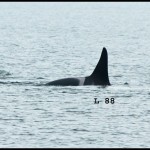
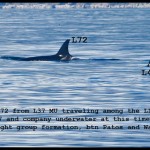
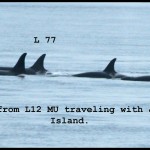
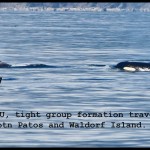
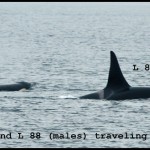
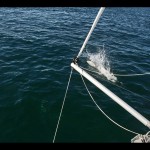
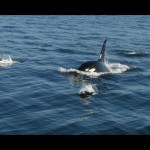
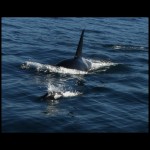
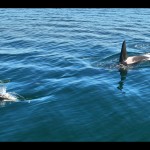
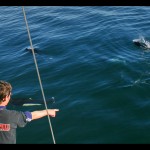
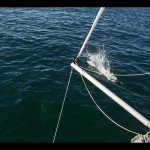





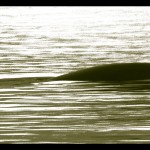
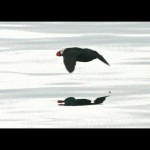
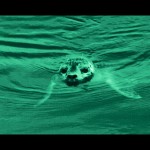
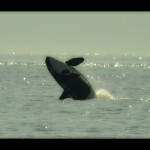
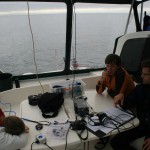
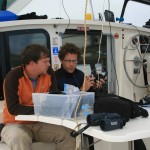
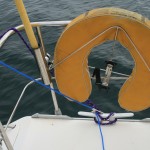
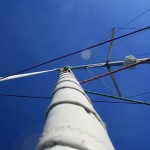
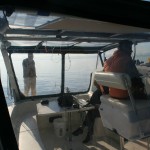
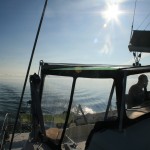
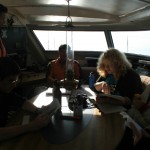
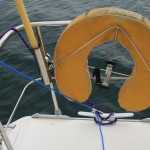
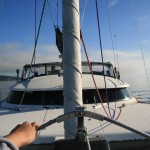
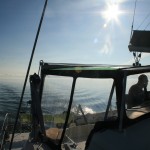
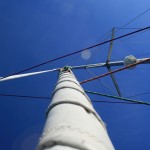


 Twitter
Twitter LinkedIn
LinkedIn Facebook
Facebook